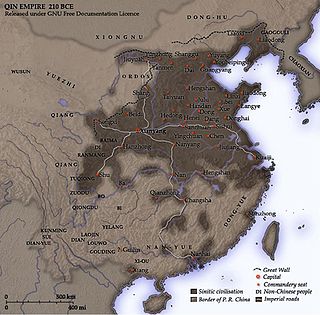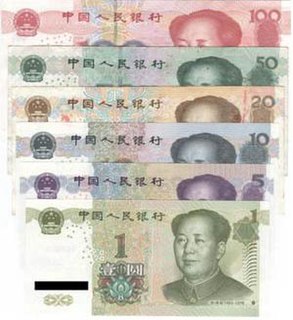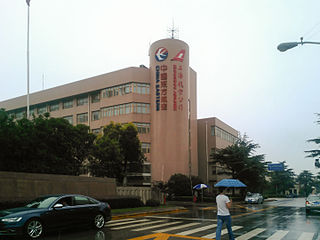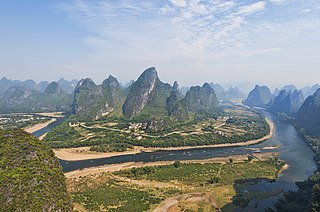
China, officially the People's Republic of China, is a country in East Asia. It is the world's most populous country, with a population of more than 1.4 billion. China spans five geographical time zones and borders 14 countries, the second most of any country in the world after Russia. Covering an area of approximately 9.6 million square kilometers (3,700,000 sq mi), it is the world's third or fourth largest country. The country consists of 23 provinces, five autonomous regions, four municipalities, and two Special Administrative Regions. The national capital is Beijing.

The giant panda, also known as the panda bear, is a bear species endemic to China. It is characterised by its bold black-and-white coat and rotund body. The name "giant panda" is sometimes used to distinguish it from the red panda, a neighboring musteloid. Though it belongs to the order Carnivora, the giant panda is a folivore, with bamboo shoots and leaves making up more than 99% of its diet. Giant pandas in the wild will occasionally eat other grasses, wild tubers, or even meat in the form of birds, rodents, or carrion. In captivity, they may receive honey, eggs, fish, yams, shrub leaves, oranges, or bananas along with specially prepared food.

Hong Kong, officially the Hong Kong Special Administrative Region of the People's Republic of China (HKSAR), is a city and special administrative region of China on the eastern Pearl River Delta in South China. With over 7.5 million residents of various nationalities in a 1,104-square-kilometre (426 sq mi) territory, Hong Kong is one of the most densely populated places in the world. Hong Kong is also one of the most developed cities in the world.

The Korean War was a war fought between North Korea and South Korea from 1950 to 1953. The war began on 25 June 1950 when North Korea invaded South Korea following clashes along the border and rebellions in South Korea. North Korea was supported by China and the Soviet Union while South Korea was supported by the United Nations, principally the United States. The fighting ended with an armistice on 27 July 1953.

Opium is dried latex obtained from the seed capsules of the opium poppy Papaver somniferum. Approximately 12 percent of opium is made up of the analgesic alkaloid morphine, which is processed chemically to produce heroin and other synthetic opioids for medicinal use and for the illegal drug trade. The latex also contains the closely related opiates codeine and thebaine, and non-analgesic alkaloids such as papaverine and noscapine. The traditional, labor-intensive method of obtaining the latex is to scratch ("score") the immature seed pods (fruits) by hand; the latex leaks out and dries to a sticky yellowish residue that is later scraped off and dehydrated. The word "meconium" historically referred to related, weaker preparations made from other parts of the opium poppy or different species of poppies.

Taiwan, officially the Republic of China (ROC), is a country in East Asia. It sits at the junction of the East and South China Seas in the northwestern Pacific Ocean, neighboring the People's Republic of China (PRC) to the northwest, Japan to the northeast, and the Philippines to the south. The territories controlled by the ROC consists of 168 islands with a combined area of 36,193 square kilometres (13,974 sq mi). The main island of Taiwan, formerly known as Formosa, has an area of 35,808 square kilometres (13,826 sq mi), with mountain ranges dominating the eastern two-thirds and plains in the western third, where its highly urbanised population is concentrated. The capital is Taipei, which, along with New Taipei City and Keelung, forms the largest metropolitan area of Taiwan. Other major cities include Kaohsiung, Taichung, Tainan, and Taoyuan. With 23.45 million inhabitants, Taiwan is among the most densely populated countries in the world.

The Han dynasty was the second imperial dynasty of China, established by Liu Bang and ruled by the House of Liu. Preceded by the short-lived Qin dynasty and a warring interregnum known as the Chu–Han contention, it was briefly interrupted by the Xin dynasty established by the usurping regent Wang Mang, and was separated into two periods—the Western Han and the Eastern Han (25–220 AD)—before being succeeded by the Three Kingdoms period. Spanning over four centuries, the Han dynasty is considered a golden age in Chinese history, and influenced the identity of the Chinese civilization ever since. Modern China's majority ethnic group refers to themselves as the "Han people", the Sinitic language is known as "Han language", and the written Chinese is referred to as "Han characters".

The Qin dynasty, or Ch'in dynasty in Wade–Giles romanization, was the first dynasty of Imperial China, lasting from 221 to 206 BC. Named for its heartland in Qin state, the dynasty was founded by Qin Shi Huang, the First Emperor of Qin. The strength of the Qin state was greatly increased by the Legalist reforms of Shang Yang in the fourth century BC, during the Warring States period. In the mid and late third century BC, the Qin state carried out a series of swift conquests, first ending the powerless Zhou dynasty and eventually conquering the other six of the Seven Warring States. Its 15 years was the shortest major dynasty in Chinese history, consisting of only two emperors, and its territory was the Yellow and Yangzi river heartland, not the modern China familiar from our maps. Despite its short reign, however, the lessons and strategies of the Qin shaped the Han dynasty and became the starting point of the Chinese imperial system that lasted from 221 BC, with interruption, development, and adaptation, until 1912 AD.

The renminbi is the official currency of the People's Republic of China and one of the world's reserve currencies, ranking as the eighth most traded currency in the world as of April 2019.

The Forbidden City is a palace complex in Dongcheng District, Beijing, China, at the center of the Imperial City of Beijing. It is surrounded by numerous opulent imperial gardens and temples including the 22-hectare (54-acre) Zhongshan Park, the sacrificial Imperial Ancestral Temple, the 69-hectare (171-acre) Beihai Park, and the 23-hectare (57-acre) Jingshan Park.

Fang Shilong born Chan Kong-sang and known professionally as Jackie Chan, is a Hong Kong-born Chinese actor, filmmaker, martial artist, and stuntman known for his slapstick acrobatic fighting style, comic timing, and innovative stunts, which he typically performs himself. Chan has been acting since the 1960s, performing in more than 150 films. He is one of the most popular action film stars of all time.

Jay Chou is a Taiwanese singer, songwriter, rapper, record producer, actor, film director, television personality, and magician. Dubbed the "King of Mandopop", and having sold over 30 million records, Chou is one of the best-selling artists in the Greater China Area and is known for his work with lyricist Vincent Fang, with whom he has frequently collaborated on his music.

China Eastern Airlines Corporation Limited, also known as China Eastern, is an airline headquartered in the China Eastern Airlines Building, on the grounds of Shanghai Hongqiao International Airport in Changning District, Shanghai. It is one of the "Big Three" airlines of the People's Republic of China, operating international, domestic and regional routes. Hongqiao airport, along with the larger Shanghai Pudong International Airport, are China Eastern's main hubs, with secondary hubs in Beijing Daxing, Kunming, and Xi'an.

The China national football team represents the People's Republic of China in international association football and is governed by the Chinese Football Association.

Xi Jinping is a Chinese politician who has been serving as General Secretary of the Chinese Communist Party (CCP) and Chairman of the Central Military Commission (CMC) since 2012, and President of the People's Republic of China (PRC) since 2013. Xi has been the paramount leader of China, the most prominent political leader in the People's Republic of China, since 2012.

The Great Wall of China is a series of fortifications that were built across the historical northern borders of ancient Chinese states and Imperial China as protection against various nomadic groups from the Eurasian Steppe. Several walls were built from as early as the 7th century BC, with selective stretches later joined together by Qin Shi Huang (220–206 BC), the first emperor of China. Little of the Qin wall remains. Later on, many successive dynasties built and maintained multiple stretches of border walls. The best-known sections of the wall were built by the Ming dynasty (1368–1644).

Beijing, alternatively romanized as Peking, is the capital of the People's Republic of China. It is the world's most populous national capital city, with over 21 million residents within an administrative area of 16,410.5 km2. Nevertheless its built-up area, the third largest in China after Guangzhou and Shanghai, is slightly bigger, including 3 districts in Hebei being conurbated but with Miyun and Pinggu Districts in Beijing not agglomerated yet. It is located in Northern China, and is governed as a municipality under the direct administration of the State Council with 16 urban, suburban, and rural districts. Beijing is mostly surrounded by Hebei Province with the exception of neighboring Tianjin to the southeast; together, the three divisions form the Jingjinji megalopolis and the national capital region of China.

The People's Republic of China has a developing market-oriented economy that incorporates economic planning through industrial policies and strategic five-year plans. Dominated by state-owned enterprises (SOEs) and mixed-ownership enterprises, the economy also consists of a large domestic private sector and openness to foreign businesses in a system described as a socialist market economy. State-owned enterprises accounted for over 60% of China's market capitalization in 2019 and generated 40% of China's GDP of US$15.97 trillion dollars in 2020, with domestic and foreign private businesses and investment accounting for the remaining 60%. As of the end of 2019, the total assets of all China's SOEs, including those operating in the financial sector, reached US$78.08 trillion. Ninety-one (91) of these SOEs belong to the 2020 Fortune Global 500 companies. China has the world's second largest economy when measured by nominal GDP, and the world's largest economy since 2014 when measured by Purchasing Power Parity (PPP). It has been the second largest by nominal GDP since 2010, with data relying on fluctuating market exchange rates. A forecast states that China will become the world's largest economy in nominal GDP by 2028. Historically, China was one of the world's foremost economic powers for most of the two millennia from the 1st until the 19th century.

Xinjiang, officially the Xinjiang Uygur Autonomous Region (XUAR) and formerly romanized as Sinkiang, is a landlocked autonomous region of the People's Republic of China (PRC), located in the northwest of the country close to Central Asia. Being the largest province-level division of China and the 8th-largest country subdivision in the world, Xinjiang spans over 1.6 million square kilometres (620,000 sq mi) and has about 25 million inhabitants. Xinjiang borders the countries of Mongolia, Russia, Kazakhstan, Kyrgyzstan, Tajikistan, Afghanistan, Pakistan and India. The rugged Karakoram, Kunlun and Tian Shan mountain ranges occupy much of Xinjiang's borders, as well as its western and southern regions. The Aksai Chin and Trans-Karakoram Tract regions, both administered by China, are claimed by India. Xinjiang also borders the Tibet Autonomous Region and the provinces of Gansu and Qinghai. The most well-known route of the historic Silk Road ran through the territory from the east to its northwestern border.

Guangxi, officially the Guangxi Zhuang Autonomous Region (GZAR), is an autonomous region of the People's Republic of China, located in South China and bordering Vietnam and the Gulf of Tonkin. Formerly a province, Guangxi became an autonomous region in 1958. Its current capital is Nanning.




















